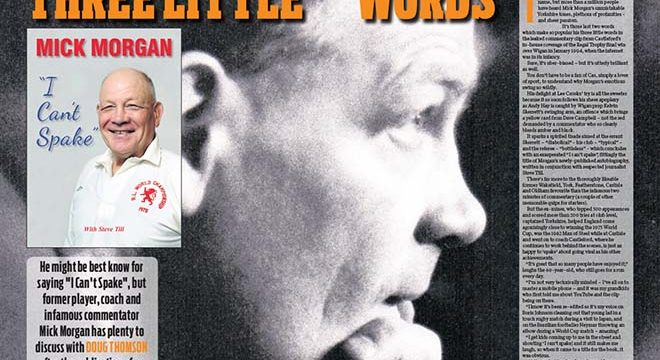 He might be best known for saying "I Can't Spake", but former player, coach and infamous commentator Mick Morgan has plenty to discuss with DOUG THOMSON after the publication of an autobiography
TALK about a YouTube sensation!
They might not all know his name, but more than a million people have heard Mick Morgan’s unmistakable Yorkshire to
He might be best known for saying "I Can't Spake", but former player, coach and infamous commentator Mick Morgan has plenty to discuss with DOUG THOMSON after the publication of an autobiography
TALK about a YouTube sensation!
They might not all know his name, but more than a million people have heard Mick Morgan’s unmistakable Yorkshire to Mick Morgan’s Three Little Words
 He might be best known for saying "I Can't Spake", but former player, coach and infamous commentator Mick Morgan has plenty to discuss with DOUG THOMSON after the publication of an autobiography
TALK about a YouTube sensation!
They might not all know his name, but more than a million people have heard Mick Morgan’s unmistakable Yorkshire to
He might be best known for saying "I Can't Spake", but former player, coach and infamous commentator Mick Morgan has plenty to discuss with DOUG THOMSON after the publication of an autobiography
TALK about a YouTube sensation!
They might not all know his name, but more than a million people have heard Mick Morgan’s unmistakable Yorkshire to 